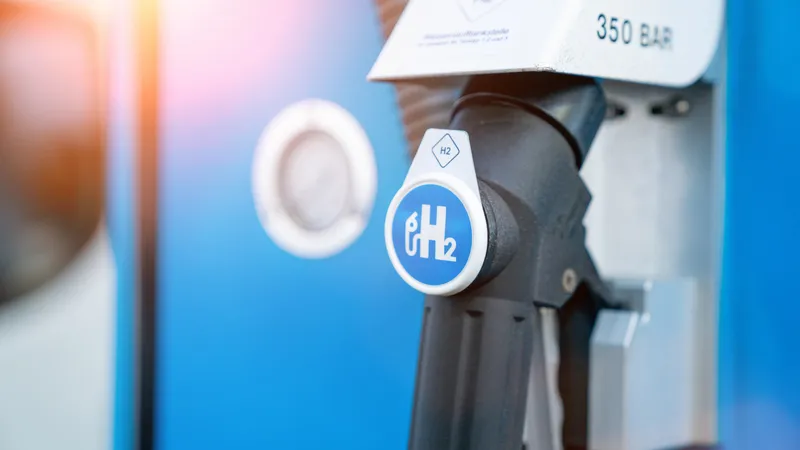An analysis by the VTT Technical Research Centre of Finland of the emission targets from 159 countries indicates that, although nearly all the world’s countries have announced targets for reducing their greenhouse gas emissions, more ambitious emission reductions are needed in order to limit global warming to two degrees.
In addition, developing countries have recently joined the effort to slow down climate change by setting targets for reducing emissions. However, despite those targets, VTT says emissi
December 4, 2015
Read time: 3 mins
An analysis by the 814 VTT Technical Research Centre of Finland of the emission targets from 159 countries indicates that, although nearly all the world’s countries have announced targets for reducing their greenhouse gas emissions, more ambitious emission reductions are needed in order to limit global warming to two degrees.
In addition, developing countries have recently joined the effort to slow down climate change by setting targets for reducing emissions. However, despite those targets, VTT says emissions will continue to increase up to 2030, and global temperature increase can be kept below the critical two degree limit only if drastic emission reductions are carried out after 2030.
VTT studied the emission reduction targets from 131 countries and the EU, investigating: how large a reduction or increase in emissions is implied by each country’s stated target; the level of global greenhouse gas emissions around 2030 implied by the targets; the prospects of limiting global warming below two degrees Celsius.
The countries that have set an emissions reduction target represent more than 90 per cent of the global greenhouse gas emissions, 89 per cent of the global population and 95 per cent of the economic production.
“The rate of emission reductions required after 2030 might not be realistic anymore, and therefore it is critically important to make the current emission targets for 2030 more ambitious,” says one of the researchers, VTT senior scientist Tommi Ekholm.
“Based on this, the negotiations at the Paris Climate Conference present an opportunity to achieve a comprehensive agreement on reducing emissions on a global scale,” Ekholm estimates.
The results of VTT’s study provide an important basis for discussion at the Paris Climate Conference. The aim of the negotiations is to draw up a global climate agreement applying to 196 countries that will come into force in 2020. Such a country-specific comparative analysis of reduction targets has not been made before. VTT will present the results of the study in a side event held on 10 December in connection with the conference.
The comparison shows that all developed countries have promised to reduce emissions by 20–30 per cent from the current level. In contrast, the targets of developing countries vary considerably.
“Some of the developing countries aim at emissions reductions or a small increase at most, whereas the target of some countries would lead to a tripling of emissions from the current level,” says Ekholm.
Of the high-emitting countries, the one with the most room for improvement is China, whose emissions would reach 13.1 tonnes of carbon dioxide per person by 2030, an increase of roughly 65 per cent compared to the 2010 level. At the same time, the emissions of the USA would decrease by approximately one third to 12.8 tonnes per person. At that time, the total emissions of China would be almost four times as large as those of the USA.
With the current targets, the EU’s emissions per person would decrease by one third to 5.9 tonnes of carbon dioxide. The fourth largest emitter is the population-rich India, whose emissions per person would double to 4.2 tonnes of carbon dioxide.
Of the large countries in 2030, six would produce more than 10 tonnes of carbon dioxide per person: Russia (18 tonnes), Australia (13.7 tonnes), China (13.1 tonnes), Canada (12.9 tonnes), USA (12.8 tonnes) and South Korea (10.8 tonnes).
In addition, developing countries have recently joined the effort to slow down climate change by setting targets for reducing emissions. However, despite those targets, VTT says emissions will continue to increase up to 2030, and global temperature increase can be kept below the critical two degree limit only if drastic emission reductions are carried out after 2030.
VTT studied the emission reduction targets from 131 countries and the EU, investigating: how large a reduction or increase in emissions is implied by each country’s stated target; the level of global greenhouse gas emissions around 2030 implied by the targets; the prospects of limiting global warming below two degrees Celsius.
The countries that have set an emissions reduction target represent more than 90 per cent of the global greenhouse gas emissions, 89 per cent of the global population and 95 per cent of the economic production.
“The rate of emission reductions required after 2030 might not be realistic anymore, and therefore it is critically important to make the current emission targets for 2030 more ambitious,” says one of the researchers, VTT senior scientist Tommi Ekholm.
“Based on this, the negotiations at the Paris Climate Conference present an opportunity to achieve a comprehensive agreement on reducing emissions on a global scale,” Ekholm estimates.
The results of VTT’s study provide an important basis for discussion at the Paris Climate Conference. The aim of the negotiations is to draw up a global climate agreement applying to 196 countries that will come into force in 2020. Such a country-specific comparative analysis of reduction targets has not been made before. VTT will present the results of the study in a side event held on 10 December in connection with the conference.
The comparison shows that all developed countries have promised to reduce emissions by 20–30 per cent from the current level. In contrast, the targets of developing countries vary considerably.
“Some of the developing countries aim at emissions reductions or a small increase at most, whereas the target of some countries would lead to a tripling of emissions from the current level,” says Ekholm.
Of the high-emitting countries, the one with the most room for improvement is China, whose emissions would reach 13.1 tonnes of carbon dioxide per person by 2030, an increase of roughly 65 per cent compared to the 2010 level. At the same time, the emissions of the USA would decrease by approximately one third to 12.8 tonnes per person. At that time, the total emissions of China would be almost four times as large as those of the USA.
With the current targets, the EU’s emissions per person would decrease by one third to 5.9 tonnes of carbon dioxide. The fourth largest emitter is the population-rich India, whose emissions per person would double to 4.2 tonnes of carbon dioxide.
Of the large countries in 2030, six would produce more than 10 tonnes of carbon dioxide per person: Russia (18 tonnes), Australia (13.7 tonnes), China (13.1 tonnes), Canada (12.9 tonnes), USA (12.8 tonnes) and South Korea (10.8 tonnes).








